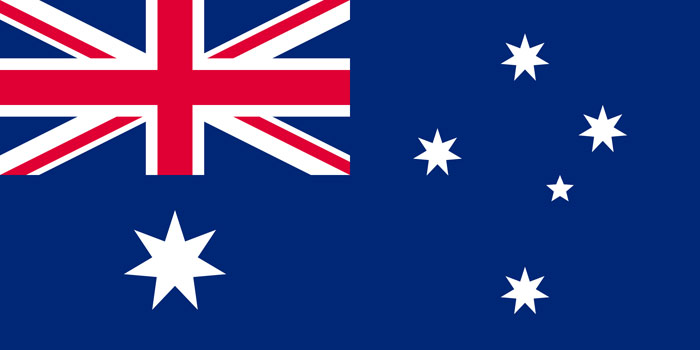Through the centuries, a great deal of stereotypical notions were conceived of any nation by other nations, which led to misconceptions and biased views. Mostly this stereotyped outlook gives rise to disparaging and objectionable attitude. Unfortunately, people are not always ready to accept strange ways and be fair to differences in cultures.

Stereotypical attitudes get in the way of our knowing the people of another nation as people, prevent us from realizing that we are all tarred with the same brush in spite of our color or facial features. What we should do to feel a part of humanity is connect and relate, rather than be amazed at peculiarities and sneer.
Anyway, some of these misconceptions can be so gross and downright silly that they had better be refuted and forgotten. They can only generate detrimental ideas and jokes in bad taste. This article deal with only ten of the false ideas about other peoples that can make our international relations muddled and unhealthy.
No shrimp on Australian grills
You can often hear something to the effect that shrimp are one of the main Australian delicacies. Firstly, Aussies call shrimp prawns, so mind that you ask for prawns if you go down there. It’s one of those linguistic differences. Secondly, they don’t put on the grill anything that we don’t – it’s all the same stuff, steak, sausages. Also, vegemite, though being a genuinely iconic local product, is far from being consumed all over Australia – most people prefer butter and cheese.
Those who have heard the slogan “Foster’s, Australian for beer,” may be surprised to learn that Foster’s is not popular locally – it is more common to drink Carlton Draught or Victoria Bitter. What’s more, Foster’s has nothing to do with Australia at all, being the brainchild of two brothers of Irish American origin. It is brewed chiefly in the UK and Belgium.
There are many Australian fauna myths, like alligator wresting, which absolutely doesn’t exist; contrary to the belief of some, not all animals on the continent are dangerous to humans. True, snakes there count among the deadliest in the world, but on the whole Australia has 1% of poisonous animals.
The world’s most obese country is the US
It may (and does) certainly seem so to a lot of people for the simple reason that the US has been for some time concerned with the self-image of the kind “thin is in” and has been fitness-concentrated in media.
Actually if we bring in the statistics, the US comes eighth or even lower on the list depending on certain aspects. Excessive weight, it seems, is a problem with over 31% of the country’s population, with Mexico having over 32%, South Africa and United Arab Emirates reaching over 33%, Jordan and Egypt over 34%, Saudi Arabia over 35% and Kuwait showing a 42.8% notch. Although it’s true that in sugar addiction the country comes first.
A third of Mexico’s population are clinically overweight. In South Africa the number of obese people is growing due to the adopted lifestyle of cheap fast food which is sold throughout the country. UAE comes second in the world’s diabetes rate in spite of their move to prohibit super-sized sodas. Jordan is the country where fitness is mostly neglected, so they have nearly 60% of obese adult women – twice as many as men. Egyptians have made a habit of consuming at least five cans of soda on the daily basis. As for the obesity leader, Kuwait, it has been flooded with fast food since Americans introduced it at the time of the first Gulf war, and the obese rates grew owing to fast food’s low quality and poor nutrition properties.
Cannabis can be legally obtained and used in the Netherlands and Amsterdam
The Netherlands is regarded by tourists as one of the European cannabis capitals, but it doesn’t follow that marijuana is legal there. Rather, it is ignored by law and thus decriminalized. According to the country’s drug policy (known as the Dutch Policy) there are soft drugs and hard drugs. Cannabis, considered a soft drug, possessed in quantities up to five grams (or cultivation of the plant in quantities up to five) is not eligible to prosecution.
Transportation and sale are not legalized, but it is done by numerous places called coffee-shops which can be found easily, and the law is un-enforced. Also, due to high profit from cannabis tourist sales made in Amsterdam and other cities, the government prefers to wink at the procedure. Though, laws were made stricter: people who grow the plant selecting seeds, cultivating soil and using electricity can get heavy penalties for professional growing.
Unfortunately, this policy isn’t producing desired results, and there is no decline in crime. On the contrary, coffee-shops started getting the stuff from criminal organizations, which led to a rise in prices and a poorer quality of the drug. Many coffee-shops have closed down, in Amsterdam there are now about 150 of them, which is half the number of what there was several years ago. Besides, Amsterdam has to stand severe pot competition from Barcelona, Portugal and some other places.
One may believe that Amsterdam people avail themselves of the opportunities eagerly, but in fact, cannabis coffee-shops and red-light prostitution are mostly aimed at tourists. Every third tourist stops by a coffee-shop, but with local people only one in five will.
Many Puerto Ricans Immigrate in the US
Puerto Rico is not a country in South America, it is a large Caribbean island (so questions like “How long is the drive to Puerto Rico?” is not quite correct). Not geographically connected to the United States, it is nevertheless the US territory. The island was a colony of Spain from the year 1493, when Christopher Columbus claimed it, till the year 1898, in which Puerto Rico was given over to the US by Spain as the result of the Spanish-American War.
Consequently, Puerto Ricans can’t be immigrants – every person born on the island becomes a citizen of the United States with all the inherent rights, including the right of vote (although the odd fact is Puerto Rico lacks voting members in the House of Representatives and the Senate.
Other related misconceptions are that a passport or a visa is necessary for going to Puerto Rico. For a US citizen or a legal permanent resident Puerto Rico is just like any other American state. No work permit is necessary for working there either.
Oktoberfest Is Germany’s National Celebration
Though famous and well-attended, Oktoberfest is not celebrated throughout Germany – it is limited to the territory of Munch, Bavaria, where it originated in 1810. Since then some other countries set up a similar festival, but these are nothing like the original festivity (more like Cinco de Mayo is celebrated in the US at which Mexicans shrug their shoulders).
People go to Munich for the festival in millions, to spend 16 or more days drinking beer, eating and hobnobbing with fellow tourists. Although there are not so many tourists as one can assume: the celebration is mostly attended by local inhabitants. About 70% of people at Oktoberfest are from Bavaria, 15% more arrive from other regions of Germany, and only the rest 15% come from abroad.
In addition, you will be interested to learn that lederhosen also belong with Bavaria and not the whole of Germany. It sounds a bit like presuming that cowboy outfit is worn in all parts of the United States. By the way, lederhosen caused some authors to draw comparisons between Bavaria and Texas and nickname Bavaria the “Texas of Germany.” Bavaria, like Texas, is a southern region, it was also once a separate country. Both places are conservative and possess unique accents and distinctive culture.
Brazilian people speak Spanish
There is a widespread belief that in Brazil they speak Spanish; some even think they have a language of their own, Brazilian. In fact, Brazilian people speak Portuguese. Naturally, their variant of Portuguese differs from the language spoken in Portugal (somewhat like the difference between American and British versions of English). In Portugal the language remains traditional and set, whereas in Brazil it is more flexible and adaptive.
Brazil is often associated with temperate climate; it is located near the equator, so it must be hot there! But it’s not quite true. The country lies below the Tropic of Capricorn, and in the mountains the winters are snowy; a number of cities are situated in subtropical climate and have cold winters with freezing temperatures. Brazil is too big to be one great beach!
Spanish people are fond of bullfighting
Of course it can’t be true. Some Spaniards are opposed to bullfighting, and there are those whose attitude to it is rather strong. There are organizations found in different parts of the world that are working towards prohibiting this traditional kind of sport. The cruelty of the performance is obvious: in bullrings operating in a number of countries (besides Spain, there are official venues in Portugal, France and Latin America) more than 13 thousand bulls get killed providing shows like the bull runs in Pamplona.
The following of this blood sport can be found in older Spaniards who mind traditions; some consider bullfighting to be a kind of art. Younger generations don’t hold such firm views, many of them just don’t give a care. The notion that bullfighting is economically beneficial is also an overstatement – there are no more than about 400 full-time employees in the whole of Spain.
The industry of bullfighting in Europe draws yearly public funding in the vicinity of 600 million Euros. While the cruel sport remains a Spanish staple, recent studies conducted by ComRes, YouGov and Gallup reveal that almost 90% of the British don’t want to attend bullfighting, more than two thirds in France are against public funding of the sport, and in Spain 67% of the population are indifferent to the show.
Ireland is packed with active Catholics
The majority of Ireland’s population are Catholic. The fact that the massive 85% practice Catholicism is explained by the fact that religion used to play a significant part in the history of the country. Nevertheless, changes are being effected, and the number of Catholics dropped from 94% registered at the beginning of the century. Not mentioning the fact that gay marriages have been legalized in Ireland!
Fifty years ago almost all Irish Catholics attended Mass weekly. Now only a quarter of them do, with the number dipping to paltry 2 or 3% regular attendees in some districts of Dublin. It is also noteworthy that Ireland’s Catholics are often not Irish, and Masses in places like Limerick are conducted in Polish owing to the abundance of Polish immigrants who go to church.
There was a time when the Catholic church existed like a state within a state, managing schools, hospitals, and orphanages. During the last two decades the situation altered drastically. Among the factors that turn people away from Catholicism are staggering cases of sexual harassment and the country’s growing prosperity. Practicing priests are now of very mellow age of 60 and above, for there are almost no replacements.
Australia and Austria, Slovenia and Slovakia, Siberia and Serbia are not the same places
Close-sounding names of places have been tripping people for decades and centuries; the worst of them had better be cleared up to prevent blunders. Australia is a continent a bit farther than Indonesia with kangaroos and other quaint animals. It is washed by oceans. Austria is a European federal state, landlocked, and known as the country that gave us Arnold Schwarzenegger and, in its dark hour, Adolf Hitler.
When Czechoslovakia broke up in 1993 it resulted in the establishment of the Czech Republic and Slovakia. Now Slovakia is a European country inhabited by five million people. Slovenia is a different country on the shore of the Adriatic Sea bordering on Hungary and Italy among other countries. It is smaller with over 2 million of population and a lot of mountains, being a parliamentary republic in the EU.
Serbia and Siberia are also widely different, Serbia being a sovereign state to the south-east of Europe, and Siberia being a large part of the Russian Federation for more than three centuries. Serbia’s capital, Belgrade, is a prominent European city with the population of over 7 million people. Siberia, a vast territory in the northern Asia, makes up more than three quarters of the Russian territory, housing 40 million people, over a quarter of the RF’s population.
America could have gotten the name “India” because Christopher Columbus had a passport for his journey that said “toward the regions of India.” When he reached the Antilles, he believed he was in the Indian Ocean and spoke of the aborigines as of “Indians.” At the time the name “India” often referred not to one country, but to the south-eastern Asia and sometimes to the whole Asian continent. That’s how native American inhabitants came to be called “Indians.” The real India is also a home for Indians, but they are not indigenous American population.
Immigrants flow in the US chiefly from Latin America
This misconception proceeds from the Republican Right largely; many people hold that the majority of the US immigrants arrive from Latin America or Mexico. Some even say that all immigrants come this way; of course, it can’t be true. Sometimes we hear politicians moan that migrant Mexicans cramp the country’s economy, and there was an idea to erect a wall along the Mexican border as a preventive measure.
Actually, Mexico has supplied the highest percentage of immigrants starting from the 1960ies up to now, yet it’s not the same as saying that most immigrants come from the south. As of 2013, 11.6 million people migrated to the US from Mexico, but this figure comes to only 28% of the total number. 72% of immigrants came from other countries.
It’s definitely more than the percentage of the people coming from other places (China, Vietnam, the Philippines, India, Korea, Cuba, El Salvador, and so on) each of them accounting for about 3-5% of the total number of immigrants. Unaccounted for are over 16 million people that constitute 42.2% who are defined as “other.” America remains to be the country of immigrants and will remain for years to come.










